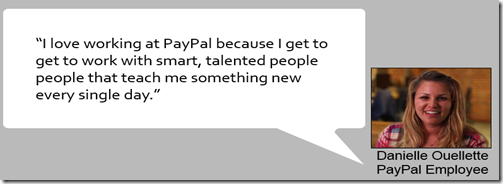I saw this on LinkedIn just before I wrote this post. It was perfect. One of my connections posted this from one of their connections, and I didn’t really track back the exact source. Thank you Danielle for your comments!
How do growing, highly innovative companies win? One of the most important differentiators is that innovative companies win the war for the best talent. Especially in the area of technical talent. In our case, highly skilled polymer scientists and engineers who know how to leverage polymers to develop new high margin products.
Here’s my list of what are the key factors to attracting and retaining highly skilled polymer talent:
- Work is fun. No 9 to 5 guys here. People are excited to come to work.
- Big challenges or big problems to solve are viewed as opportunities, and failure is part of the learning process.
- Continuous learning is a key part of the company culture.
When work is fun, you don’t even think about it as work. Have you ever been in that type of situation? It’s a blast. I have been fortunate over my career to have a lot of fun in my work. Along the way, there have been many things that get in the way of having fun, and that is just part of business, but overall, enjoying your work is a pretty key aspect. Think about it. You work more than 40 hours in a week, so you spend a significant amount of time hopefully doing what you love. One of the great benefits of consulting is that I get to work with a wide variety of different people on a lot of interesting projects. Most of the time my client projects are a lot of fun.
If you reflect a bit on you work and career, you will probably find that you got the most satisfaction when you solved a big complicated problem. Technical types really embrace big technical challenges so when you have a steady stream of intellectual challenges, most people I know are pretty pumped. Jim Collins in his book “Good to Great” calls them “big hairy audacious goals.” The key is that fast growing companies give their teams big stretch goals to help get them thinking outside the box to find a solution. Incremental goals are sometimes necessary, but they don’t require you to throw out “the way we have always done it” and look for completely new approaches.
I learned the power of big hairy audacious goals when I was at IBM. The IBM designers were developing a 60 layer circuit board for the next generation mainframe computer and the modeling work showed the dielectric constant of the board material was too high (the signal speed was too slow) and the material they were using was cracking. I was developing a low dielectric constant material with a brand new toughening agent. Another IBM colleague has just synthesized a couple grams in his lab and my testing showed it increased the fracture toughness and lowered the dielectric constant. This was mid-September. The lab director called me to his office and said we needed to accelerate the development. He asked me when I could make 1500 sheets on the manufacturing equipment. I said next June. He said, “you have until January 15, so get out of my office, you have some work to do!” I figured we had about 4 months to scale up the toughening agent, finish the formulation work (new base resin and toughener), get the material properties optimized, get prototype circuit boards made to validate the electrical properties, and make a large scale manufacturing run.
Turns out, if I had followed the normal rules, there was no way I could have completed the task. This was a big hairy audacious goal. To make a long story short, I broke-up the project into multiple “mini-teams” to get work done in parallel, took a lot of calculated risks, found an outside vendor to synthesize and scale-up the toughening agent, and worked on the final formulation in parallel. On January 15, I presented a sheet of the new material to the lab director. He asked where are the other 1499. I said there were 3000 sheets in the manufacturing area. Turns out, once you start the big treater, it was easy to make more than enough sheets. We had to bend/break some of the hallowed IBM internal practices, but we got the job done. When I walked out of the lab directors office, I had no idea how we were going to get it done. Faced with a huge challenge, we were able to rally the troops and complete the work on time.
The third key is continuous learning. Continuous learning is another of those “if you’re standing still, you’re falling behind” situations. Polymer technology is changing fast and the most innovative companies are staying on top of the learning curve. My best clients are where we work together to develop new products and learn new things along the way. The most important thing to realize is that you will not always have the answer, but you know how to find the answer. When you then find the answer, you learn new things which in turn increase the overall organizational technical competence. It’s a win-win. Technical types love to learn, embrace challenges, and have fun at work. Companies that provide a work environment that fosters these three elements will grow and innovate. How is your company doing on these three aspect?


Leave a Reply